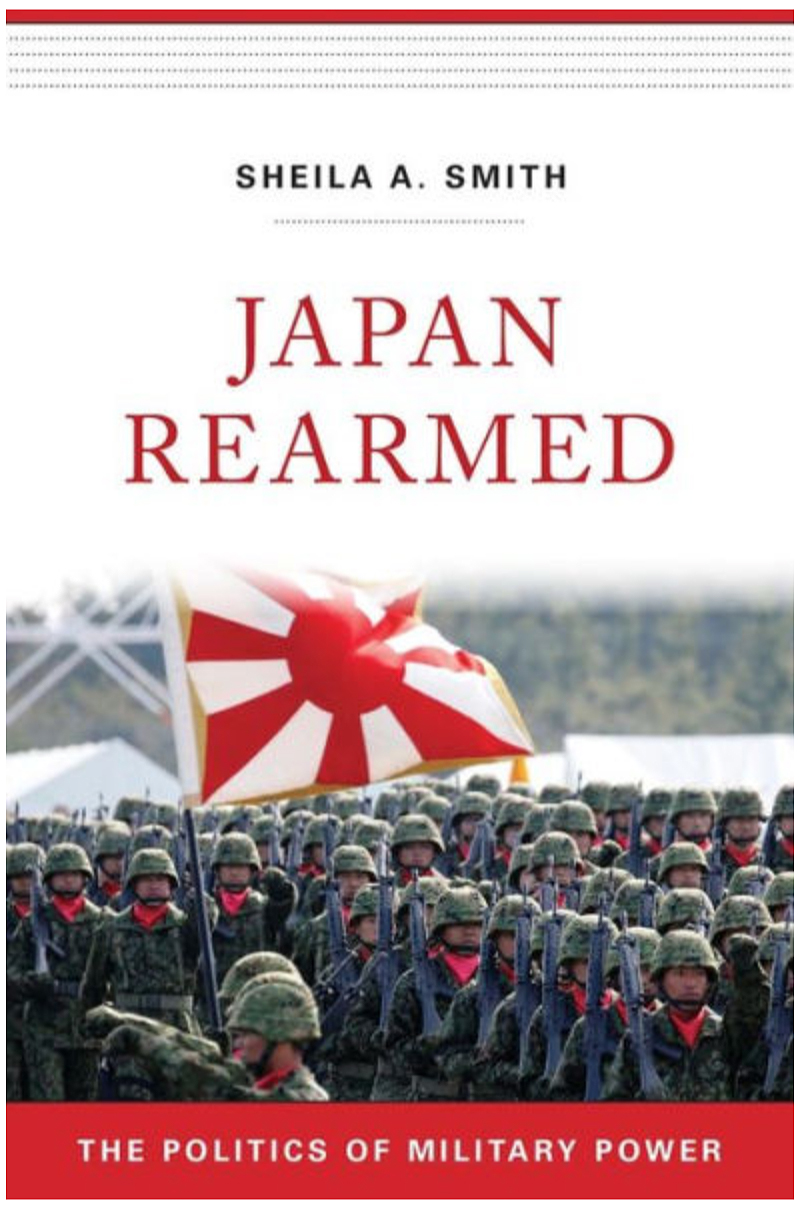Ruta de navegación
Blogs
Entries with label japanese self-defense forces .
[Sheila A. Smith, Japan Rearmed. The Politics of Military Power. Harvard University Press. Cambridge, 2019. 239 p.]
review / Ignacio Yárnoz
 Japan is currently facing a status of sensitive national security. On the north, the country is constantly subjected to harassment by the Democratic People's Republic of Korea in the form of ballistic missile tests that often land in Japanese territorial waters. To the east and southeast, Japan's sovereignty over its territorial waters, including the disputed Senkaku Islands, is threatened by a China increasingly keen to flex its economic and military muscles.
Japan is currently facing a status of sensitive national security. On the north, the country is constantly subjected to harassment by the Democratic People's Republic of Korea in the form of ballistic missile tests that often land in Japanese territorial waters. To the east and southeast, Japan's sovereignty over its territorial waters, including the disputed Senkaku Islands, is threatened by a China increasingly keen to flex its economic and military muscles.
And as if this were not enough, Japan is already questioning the security that the United States can or wants to provide in the event of a regional conflict. If in the past Japan feared being dragged into a war because of the American predisposition to use fire to solve certain situations, now what Tokyo fears is that the United States will not accompany it when it comes to defending its sovereignty.
That national security dilemma is what Japan Rearmed tackles. The Politics of Military Power, by Sheila A. Smith, a senior fellow at the Council on Foreign Relations in the United States. The book brings together the different views on this issue. The Japanese government's position is that Japan should be more confident in itself in order to maintain its own security. But this is where the biggest hurdle arises. Since its defeat in World War II and subsequent U.S. domination of the country until 1952, the national Armed Forces have been downgraded to "Self-Defense Forces." The reality is that the 1947 Constitution, specifically its article issue 9, continues to limit the functions of Japanese troops.
Introduced directly by the U.S. command, the article 9, never amended, reads: "Sincerely aspiring to an international peace based on justice and order, the Japanese people Withdrawal war as the sovereign right of the nation and the threat or use of force as a means of settling international disputes. (2) In order to carry out the wish expressed in the preceding paragraph, land, sea or air forces and any other military potential shall not be maintained in the future. The right of belligerency of the state shall not be recognized."
This article, a novelty at the time, was intended to open an era safe from warmongering tendencies, in which the project of the United Nations would be the basis for collective security and the peaceful settlement of disputes. However, history itself showed how in a matter of a few years the very architects of that Constitution called for the rearmament of Japan in the context of the Korean War; it was now too late for a rethinking of the foundational limitations of the new Japan.
Following changes in Asia's geopolitics over the past 30 years after the end of the Cold War, Japan has taken steps to regain its international presence, but even today it continues to stumble under the constraint of its constitution. As Smith rightly describes, there are many legal hurdles that the Japan Self-Defense Forces have had to overcome since 1945. Issues such as Japan's performance abroad under the flag of the United Nations, its absence from the 1st Gulf War, the discussion The debate on resilience after an attack by North Korea or Japan's performance in the 2nd Gulf War are all discussed and analyzed in this book. In addition to this, the author tries to explain the reasons and arguments in each of the debates concerning the article 9, such as self-defense, the role of the Self-Defense Forces and the relationship with the United States, issues that confront the Japanese political elite. Several generations of political leaders have tried to resolve the dilemma of guaranteeing Japan's security and interests without limiting the capabilities of its armed forces, although so far there has been no consensus to change certain constitutional budgets, in the direction in which Prime Minister Shinzo Abe is pushing.
Japan rearmed is a 360 review Degrees where the reader finds a complete analysis of the main obstacles faced by the Japan Self-Defense Forces and what their role may be. development future. In a framework More broadly, the book also addresses the role of the Armed Forces in a democracy, which must reconcile its rejection of violence with the obligation to guarantee collective defense.
